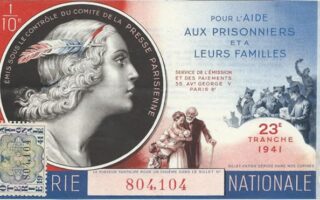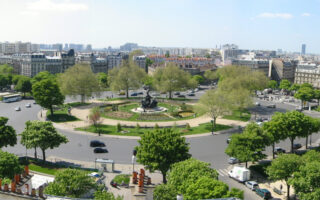The Real Story of the Sacking of the Bastille
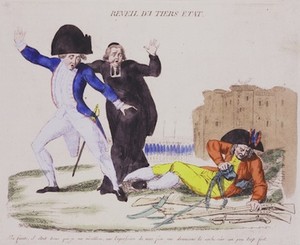
- SUBSCRIBE
- ALREADY SUBSCRIBED?
BECOME A BONJOUR PARIS MEMBER
Gain full access to our collection of over 5,000 articles and bring the City of Light into your life. Just 60 USD per year.
Find out why you should become a member here.
Sign in
Fill in your credentials below.
Most people don’t realize that the event marking French Independence Day, known in France as La Fête Nationale, began well before July 14, 1789, and the sacking of the Bastille Fortress. In fact, the storming of the Bastille was the climax of a quickening political drama whose acts included the looting of Les Invalides the day before, and the emergence of a revolutionary mob the day before that, all of which stemmed from a mounting national economic crisis.
So let’s begin there, in the spring of 1789:
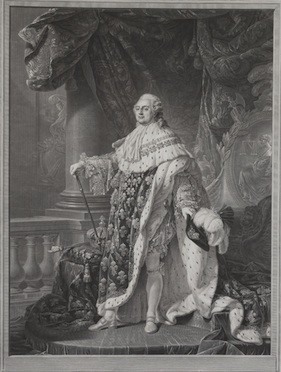 King Louis XVI could no longer deny that his country faced financial catastrophe. He called for a meeting of the Estates General – a counseling body comprised of equal numbers of representatives from the nobility, the clergy, and everybody else (the Third Estate) – to help him resolve the situation. But the Estates General had not been convened for more than 150 years, so delegates had to be selected from the four corners of the country.
King Louis XVI could no longer deny that his country faced financial catastrophe. He called for a meeting of the Estates General – a counseling body comprised of equal numbers of representatives from the nobility, the clergy, and everybody else (the Third Estate) – to help him resolve the situation. But the Estates General had not been convened for more than 150 years, so delegates had to be selected from the four corners of the country.
By June, a freshly minted Third Estate, some 12,000 strong, began to arrive at Versailles. They came to usher in a new, golden age for France. They came to help find a solution to their country’s economic problems. They carried with them the hope and optimism of the entire French nation. Confidence reigned.
But it quickly soured. The Third Estate, representing 96% of the French population, demanded more voting power. Traditionally, they were given only as many votes as the clergy and nobility, and the last two always voted with the monarchy.
Their demand did not sit well with the King’s more conservative advisors. And so, caving to their pressure, King Louis XVI locked the Third Estate delegates out of the meeting.
But they refused to leave Versailles.
They convened their own meeting, in the king’s indoor games court, the Jeu de Paume, the only place big enough to accommodate their numbers and shelter them from the storm that raged like their fury with the old regime.
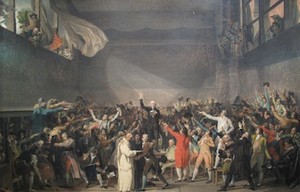 Forty-seven nobles and many clergy as well left the king’s meeting to join the Third Estate. Together, they named themselves The National Assembly, an assembly not of the Estates, but of the People. They proclaimed themselves “the true representatives of the French”. They declared themselves France’s new government and pledged to remain together until they had written France her first constitution.
Forty-seven nobles and many clergy as well left the king’s meeting to join the Third Estate. Together, they named themselves The National Assembly, an assembly not of the Estates, but of the People. They proclaimed themselves “the true representatives of the French”. They declared themselves France’s new government and pledged to remain together until they had written France her first constitution.
It seemed the Revolution was won, and peacefully, too. But King Louis XVI and his Royalist advisors were not so quick to recognize France’s new, self-proclaimed government. Where did it put them?
As they awaited the coming of the new constitution, they grew anxious of the growing rumble back in Paris. The king ordered troops to surround the city. Parisians grew scared of the weapons now pointing at them.
Fast-forward one month, to 12 July 1789:
 While dining at the Palais Royal, Camille Desmoulins, a poor journalist from northeastern France and Third Estate representative to the Estates General, found himself surrounded by a shouting, angry mob.
While dining at the Palais Royal, Camille Desmoulins, a poor journalist from northeastern France and Third Estate representative to the Estates General, found himself surrounded by a shouting, angry mob.
We’re frightened by the advance of the king’s troops on Paris, they told him.
How will we defend ourselves against the king’s soldiers? they asked.
Desmoulins was known for his awkward stutter. But on this day he lost it, at least for a little while. If they needed weapons, they would steal them from the king! They would capture the king’s munitions at Les Invalides!
He climbed onto a table and shouted, “Aux armes, citoyens!” To arms, citizens! “Plunder the arsenal!”
The next morning, 13 July, 60,000 people met at Les Invalides, the home of both war veterans as well as the king’s armory. The mob got away with over 10 cannon and 28,000 muskets without any resistance. But, they found no gunpowder.
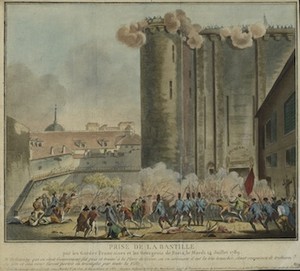 It took them the rest of that day to haul their heavy loot across Paris. But the following morning, a rabble even larger than the day before had assembled at the imposing Bastille entrance. The 14th century fortress-turned-prison, made up of eight stone towers linking 80-foot walls, was locked up tight. The gunpowder needed to fuel the army’s munitions was hiding there.
It took them the rest of that day to haul their heavy loot across Paris. But the following morning, a rabble even larger than the day before had assembled at the imposing Bastille entrance. The 14th century fortress-turned-prison, made up of eight stone towers linking 80-foot walls, was locked up tight. The gunpowder needed to fuel the army’s munitions was hiding there.
Armed with cannon and guns stolen from Les Invalides, as well as scythes, clubs, pikes, even stones – anything that could be used as a weapon – the horde demanded the fortress guards to give them gunpowder and to free the poor souls imprisoned there. The guards would not allow the people inside and prepared to defend themselves from the rooftop crenellations.
A standoff ensued, lasting many hot, sticky hours. Suddenly, a gun blast was heard. To this day, no one knows who, or which side, actually fired first. It was very likely an accident. But the mob, thinking it was under attack, stormed the fortress. Members of the new Revolutionary police force, the National Guard, joined them.
They chopped off the head of the Bastille sentry and stuck it on a pike, raising it high for all to see. The people went wild, tearing the Bastille apart, stone by stone, until their fingers bled. They freed the prisoners being held there (surprised to find only seven). They stole the king’s gunpowder to fuel the king’s arms, unleashing a more violent and radical stage in the French Revolution.
One hundred plus years later…
It wasn’t until 1880 that July 14th was declared French Independence Day, La Fête Nationale. Donc, Attention! Though the celebration is held on the anniversary of the sacking of the Bastille, and though that event remains an important historic symbol of the Revolution, the French never refer to their independence day as “Bastille Day”. They prefer the moniker, Le Quatorze Juillet, with its less violent connotation.
Sarah Towle is Founder & Creative Director of Time Traveler Tours, interactive mobile iTineraries led by history’s most colorful characters. To learn more, please pay her a visit on her website.
Image Sources:
Bervic, Charles-Clément (1756-1822). Louis XVI, King of France, 1790. Reproduction of original engraving [LC-USZ62-82999], courtesy of the Library of Congress Prints and Photographs Division Washington, D.C. 20540 USA.
Unknown. Reveil du tiers état (Awakening of the Third Estate), 1789. Digital reproduction of hand- colored etching [LC-USZC2-3595] courtesy of the Library of Congress Prints and Photographs Division, French Political Cartoon Collection, Washington, D.C. 20540 USA.
David, Jacques-Louis. Serment du jeu de paume à Versailles, 20 juin 1789 (The Tennis Court Oath at Versailles, 20 June 1789), 1791. Photo credit © Sarah B. Towle, 2010, photographed with permission, Musée Carnavalet.
Unknown. Motion faite au Palais Royal, par Camille Desmoulins, le 12 juillet 1789, 1804. Digital reproduction by Pierre-Gabriel Berthault, courtesy of Wikimedia Commons.
Unknown. Prise de la Bastille (Taking of the Bastille). Credit photographique: Musée de la Révolution Françaises, Vizille, France, http://www.domaine- vizille.fr, Inv. MRF 1988-117.
More in Bastille, French history, history, La Fête Nationale

